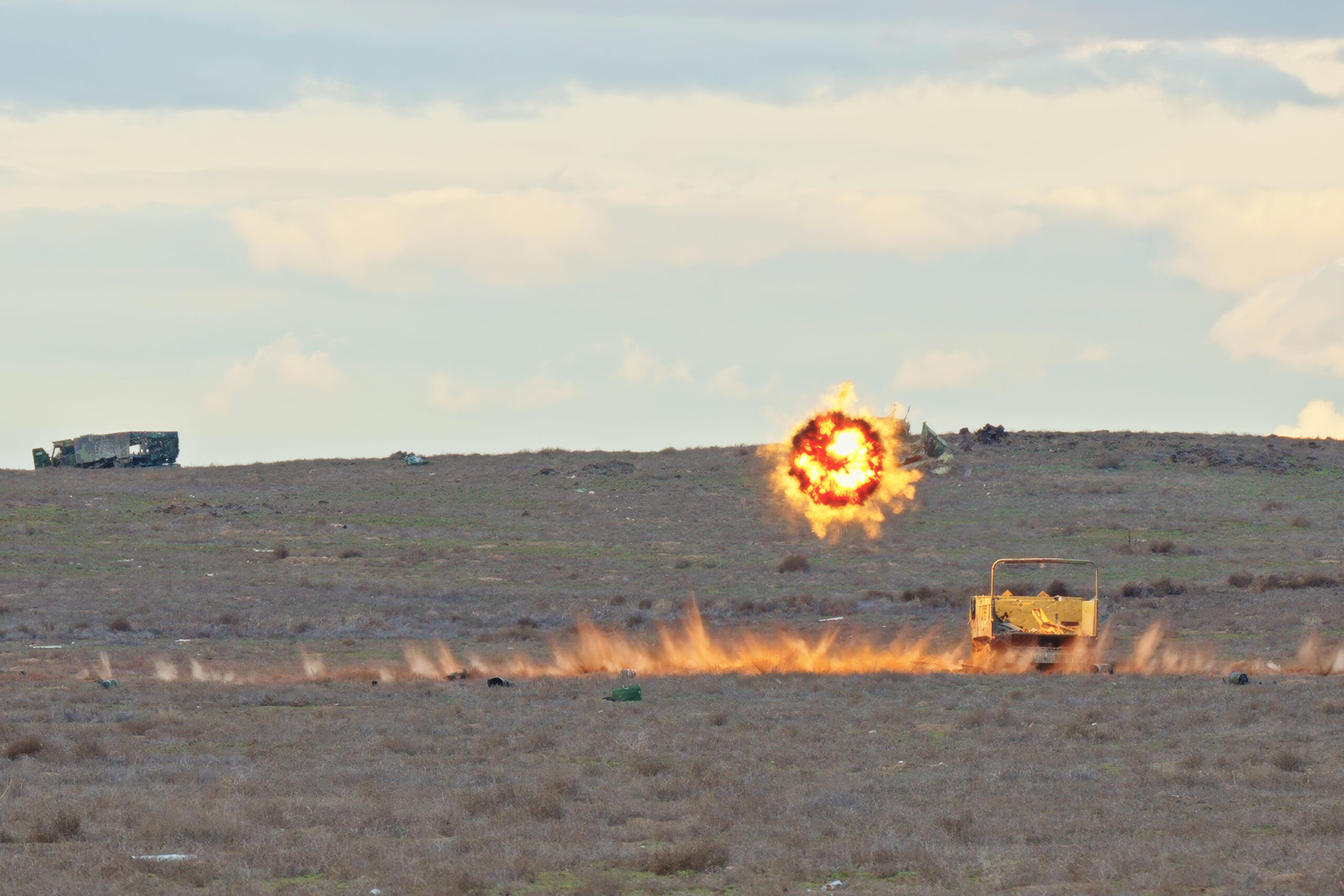
Delivering effective, programmable airburst for Ukraine
Tim Guest
The use of unmanned aerial vehicles (UAVs) and loitering munitions (LMs) above the battlefields of Ukraine are just some of the airborne threats that have changed the battlespace forever. However, the airburst/proximity effects and latest ‘programmable’ capabilities of certain medium-calibre munitions are providing an effective counter.
This article looks briefly at the relevance of proximity effects, the market for programmable munitions in general, and latest medium-calibre, programmable munition developments related to the battlefields of Ukraine and beyond, that will hopefully make a difference to air defence capabilities against massed UAVs/drones and other aerial targets.

Credit: US Army/Major Chris Clyne
Proximity’s punch
Proximity or airburst effects on target have always been a favoured choice by gunners, when faced with target descriptions such as ‘troops in the open’ from their forward observers calling for fire support; for more than 100 years and through different wars, medium- to large-calibre guns have fired HE shells, with fuzes set to detonate at certain altitudes to produce large amounts of airborne shrapnel, either against terrestrial targets of various descriptions, or when fired at a high angle to explode as flak in the proximity of aircraft formations. Today, this capability is as relevant as ever in the face of not only low-altitude fixed-wing aircraft and helicopters, but also the aforementioned UAVs and LMs, which have also proliferated in Ukraine.
Thankfully, various medium-calibre munitions and ways of setting, or programming them, are emerging and increasing the effectiveness of current and planned fighting vehicles, very/short-range air defence (VSHORAD/SHORAD) systems and autocannons. Deployed in air-defence roles, they are capable of detonating with precise, airburst effects against these contemporary aerial threats. Indeed, VSHORAD systems being supplied to Ukrainian Forces, such as the German Skynex system, are set to make a difference in the war, although how much of a difference depends largely on how many systems are delivered; the more, obviously, the better. However, before looking at a couple of such systems in more detail, let’s first take a brief look at the market for programmable munitions.
Demand spurs growth
In a recent report on the growth trends in programmable ammunition over the next five years, research company Mordor Intelligence predicts the market can expect significant growth, bolstered by such demands as those for precision-guided rounds, as well as the not-unconnected emphasis, (at least by some adherent nations to accepted norms and laws of armed conflict), on trying to reduce the potential for collateral damage when using munitions of any kind. This is an issue, which programmable munitions can mitigate, to a degree, through greater predictability. The research classifies the programmable ammunition market along calibre lines, from medium- to large-calibre, as well as by munition type, such as guided or target sensing, and drills down to the type of detonation a munition delivers on target, including point detonating (PD), remote wireless, and programmable time and proximity detonation types. In the latter case, for medium-calibre munitions, programmable proximity effects for air defence systems have been bolstered in recent years from advances in miniaturisation, communication and sensor technologies. Indeed, much of the market’s growth is predicted in the medium-calibre segment, comprising 20 mm, 25 mm, 30 mm, and 40 mm rounds of various specifications, some of which are being developed specifically to meet new detonation requirements to defeat modern UAV threats.
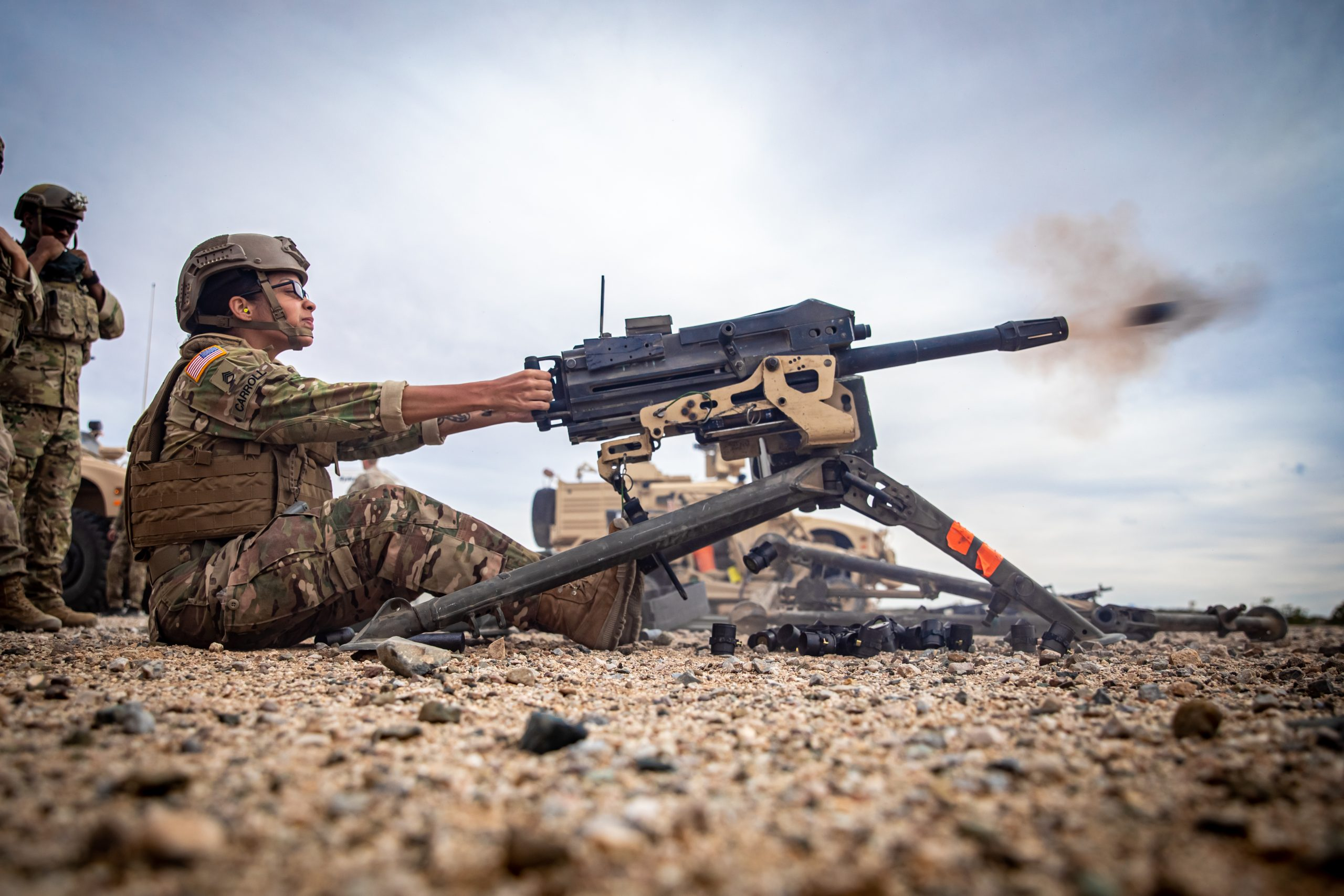
Credit: Nammo
Manufacturers such as Rheinmetall are making strides with programmable munitions, as highlighted in its January 2023 contracts to supply two unnamed European NATO customers with 40 mm ammunition, including low and high-velocity variants, and comprising 45,000 rounds of programmable 40 mm x 53 high-velocity, high explosive (HE)-tracer airburst munition (HV HE-T ABM), for delivery in the first half of this year. The research further underlines that it is demand for such ‘technologically advanced, programmable medium-calibre ammunition’ that will be behind the projected significant growth in the market over the next five years, with the lion’s share expected in North America, where ammunition makers are already investing considerable resources in R&D towards next-generation, advanced medium and larger-calibre, programmable systems. US company, Northrop Grumman, is one leading North American player in this regard, while European leviathans, BAE Systems, Nammo, and Rheinmetall, have all been very much similarly incentivised by the war in Ukraine and the changing nature of the battlefield to bolster their own programmable development efforts.
That said, other smaller concerns have also been pursuing such advances, with the report, for example, citing medium-calibre programmable developments at the Serbian Military Technical Institute (MTI), where a programmable proximity/airburst round for MTI’s new variant of the PASARS-16 self-propelled VSHORAD system for use with its single-barrel, 40 mm L/70 Bofors automatic cannon main armament, has been developed. The rounds, which reportedly release 1,100 pieces of tungsten shrapnel on detonation close to a target, are intended for use predominantly against UAVs. Serbian defence manufacturer, Sloboda, makes standard ammunition for the autocannon.
The research also drew attention to current US Army manoeuvre short-range air-defence (M-SHORAD) programme developments, to come up with a programmable munition effective against drones, as well as various land-based targets, highlighting the XM1223 HE multi-mode proximity airburst (MMPA) round, (more on this below), as part of the programme’s latest phase, Increment 3.
Airburst for Ukraine
Already mentioned above, Rheinmetall’s Oerlikon Skynex air-defence system is right at the forefront in terms of its capabilities and programmable ammunition developments, as well as it being one of the most advanced VSHORAD systems supplied, or being supplied, to Ukraine for its efforts against Russian Forces.
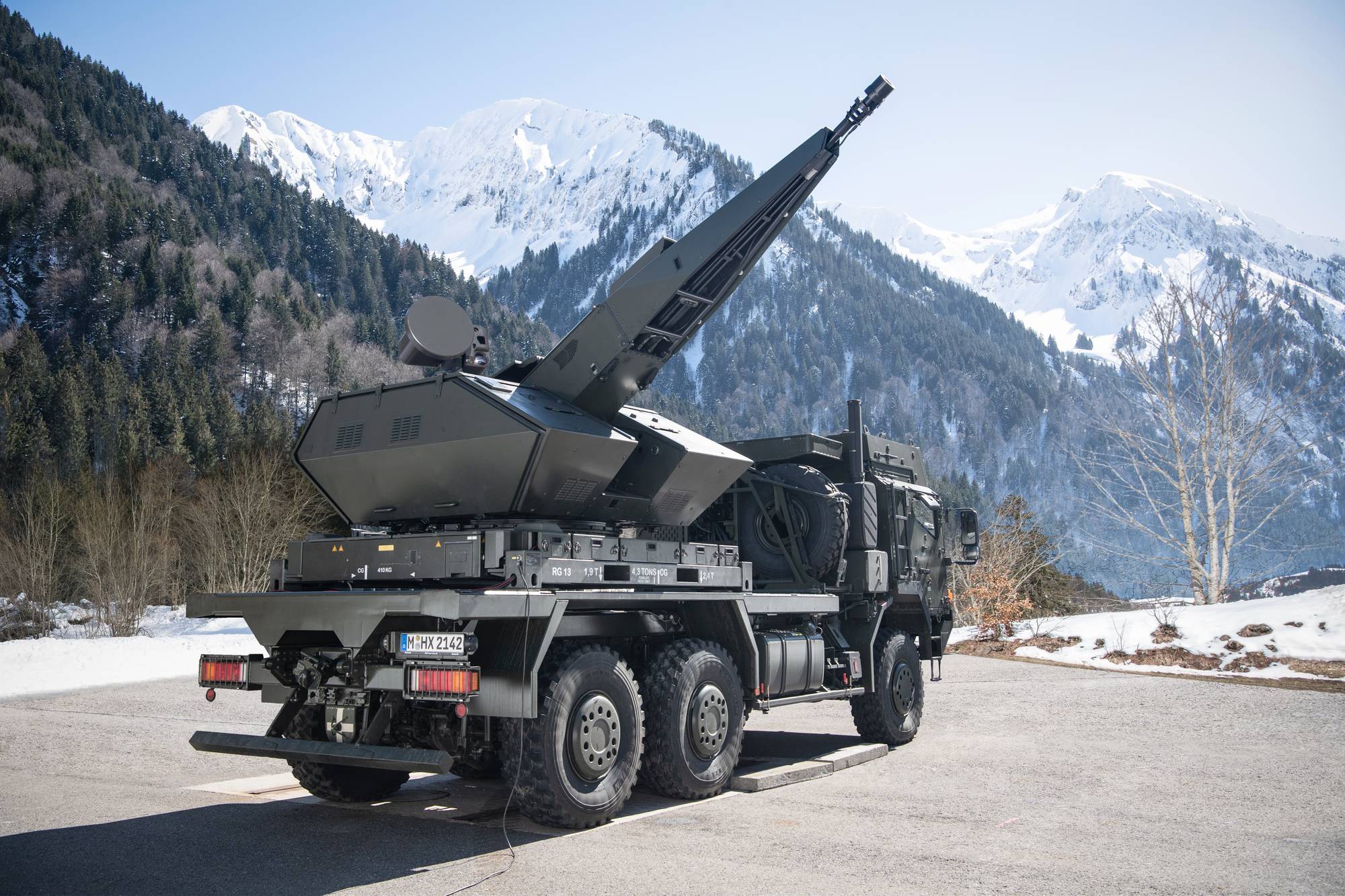
Credit: Rheinmetall
On the German Government’s latest list of equipment for Ukraine, (either from its own armed forces’ stocks, or from industry-supplied materiel, financed with government funds), it lists two Skynex systems along with ammunition, both on its ‘supplied’ and ‘in planning to be supplied in the future’ lists. According to The New Voice of Ukraine, the first system was delivered in 2023, with the second received at the end of April 2024. These developments, according to a report in the Kyiv Post, appear to correspond to Rheinmetall’s contract with the German government in December 2022 to produce two Skynex systems at a cost of EUR 182 million for an early-2024 delivery.
Rheinmetall’s February 2024 Skynex announcement, prior to the German government’s latest equipment supply list for Ukraine, seems to confirm in its title: “Rheinmetall supplying European customer with further Skynex air defence systems”, that at least two further Skynex systems are underway. It also says that, “as with the initial contract”, the order includes HX family trucks from Rheinmetall MAN Military Vehicles (RMMV), on which, it is assumed, the Skynex platforms will be mounted. Importantly, it confirms that these latest systems will be delivered during 2025. While making no specific mention of the ammunition to be supplied, it does refer to its 35 mm ‘Advanced Hit Efficiency And Destruction’ (AHEAD) munition, which has been supplied with the previous Skynex order, so one assumes that the 35 mm ammunition mentioned in the German Government’s recent announcement of supplies for Ukraine similarly includes AHEAD ammunition.
Interestingly, Ukraine’s Prime Minister, Denys Shmyhal, as reported earlier this year in the Kyiv Post, confirmed that one Skynex system was already in operation prior to this latest announcement, although some uncertainty in the country’s media remains as to whether the latest systems will bring just two, three, or four Skynex systems in total to Ukraine. It certainly looks to be two from the initial December 2022 order and at least a further two from the latest announcement. Unsurprisingly, the Kyiv Post article, unsure as to exact numbers, suggested that, although suited for point defence, unless Skynex is deployed in larger numbers, it will provide only ‘limited’ improvements to Ukraine’s overall air defences and that more are needed.
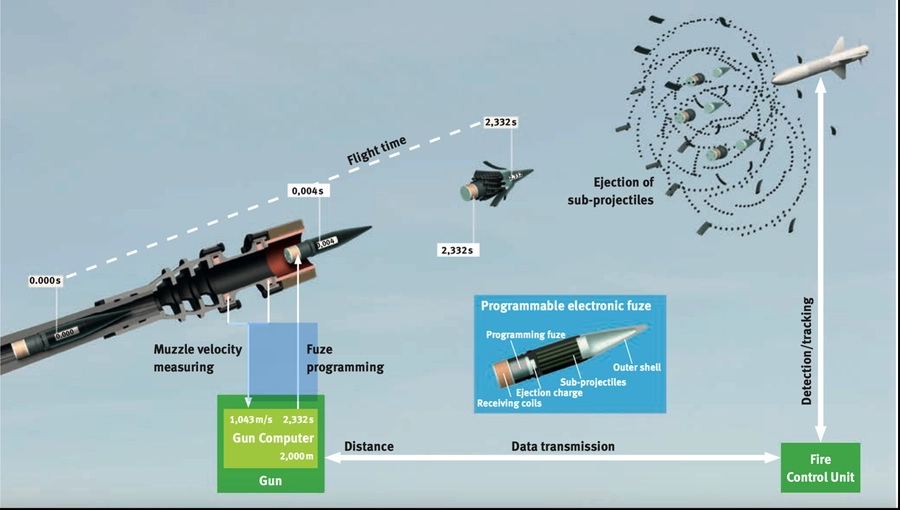
Credit: Rheinmetall
Skynex and AHEAD’s programmable effects
Nevertheless, Skynex is a formidable, automatic-cannon-based, air-defence system, effective in short and very short-range scenarios where its use with Rheinmetall’s programmable 35 mm AHEAD ammunition is both significantly more effective than using guided missiles at such ranges, as well as much less expensive. Both HE airburst/proximity munition (ABM) and armour-piercing, kinetic energy time fuze (KETF), rounds are available. Unlike their missile counterparts, the 35 mm rounds are immune to electronic countermeasures. Skynex’s primary armament is its 35 mm Oerlikon Revolver Gun Mk3, which has an integrated radar tracker and optronic sensor unit. But it is the programmable AHEAD ammunition, which is of interest in the context of this feature. This type of projectile, which has been around for various guns and 30 mm/35 mm calibres for several years, is effective against ground-based threats as well as conventional low-flying aerial targets, UAVs, and loitering munitions prevalent in Ukraine. In the case of Skynex, the AHEAD 35 mm x 228 mm round’s programmable fuze contains an electronic timer module, which is ‘programmed’, or set, by electronic induction, (itself a process used for setting the likes of 105 mm and 155 mm ammunition artillery fuzes on the gun position over many decades).
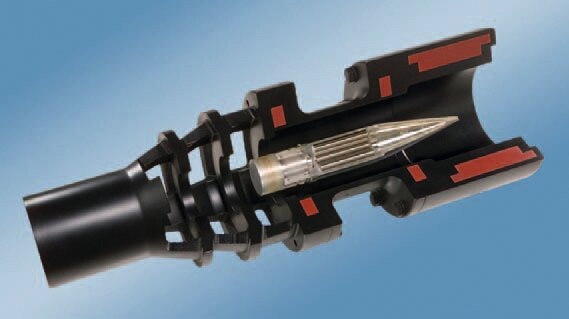
Credit: Rheinmetall
As each 35 mm round passes through an induction field inside the muzzle when leaving the gun, its muzzle velocity is used to determine any corrections in velocity and ejection time to be programmed into each round as it passes through the muzzle, in order for it to detonate at its own optimum target intercept point. It is worth noting, while the Mk3 Oerlikon gun carries 252 rounds as standard, it can fire 1,000 rounds per minute to a range of some 4.5 km, typically firing bursts of 24 rounds at a time. On detonation of a small, 1 g ejection charge just ahead of the target, the AHEAD projectile releases its payload; in the case of the Oerlikon 35 mm KETF/AHEAD PMD062 round used for a wide range of aerial targets, the payload is 152 cylindrical, 3.3 g, tungsten-alloy, spin-stabilised sub-projectiles, which, once released, are designed to form a lethal cone of shrapnel ahead of a target’s flight path and intended to increase the probability of destroying it, particularly at extended ranges. The second configuration for air-defence purposes, though best suited to destroy small, fast and agile targets, is the Oerlikon 35 mm KETF/AHEAD PMD428 round, which releases over 600 sub-projectiles. The higher the number of sub-projectiles the greater the probability of a target kill. In both cases, the cloud of aerodynamic sub-projectiles has the potential to rip through a target’s control surfaces and vital systems; indeed, a trial of 35 mm AHEAD ABM ammunition by Rheinmentall in mid-2021 against a swarm of eight drones, saw a burst of 18 rounds destroy all targets, although data showed all eight to have been destroyed after the first six rounds had detonated, (which also indicated the value-add and potential savings in ammunition expenditure when using AHEAD munitions). While the airburst effect is lethal against UAVs and loitering munitions, it is also effective against anti-radar, anti-ship and cruise missiles, and fixed and rotary-winged aircraft.
As well as the 35 mm x 228 rounds for such systems as Skynex, AHEAD technology has also been incorporated into 30 mm x 173 rounds for use with several terrestrial autocannons and chain guns, as well as naval close-in weapon systems; the technology has evolved to be effective for dedicated applications including ‘counter rockets, artillery and mortar’ (C-RAM) missions, where rounds have been developed that are effective in destroying incoming artillery and mortar rounds, as well as artillery rockets, all following parabolic trajectories.
Programmable for M-SHORAD
Meanwhile in the US, where companies such as Northrop Grumman are key forces in the programmable munitions market, the US Army is forging ahead with its new M-SHORAD system, which has three variants, referred to as ‘Increments’. Intended to provide both dedicated and non-dedicated air defences against low-altitude aerial threats to troops, as well as fixed and semi-fixed critical assets, M-SHORAD’s remit has grown to encompass the exponential threat from UAVs, as seen in Russia’s invasion of Ukraine. The first systems comprising a full Increment-1 complement of weapons, sensors and tech were delivered to the Army in 2021 and, relevant to this discussion, include an XM914 30 mm × 113 automatic cannon, which uses standard XM1211 high explosive proximity (HEP) and XM1198 high explosive dual-purpose, self-destruct (HEDP-SD) rounds.
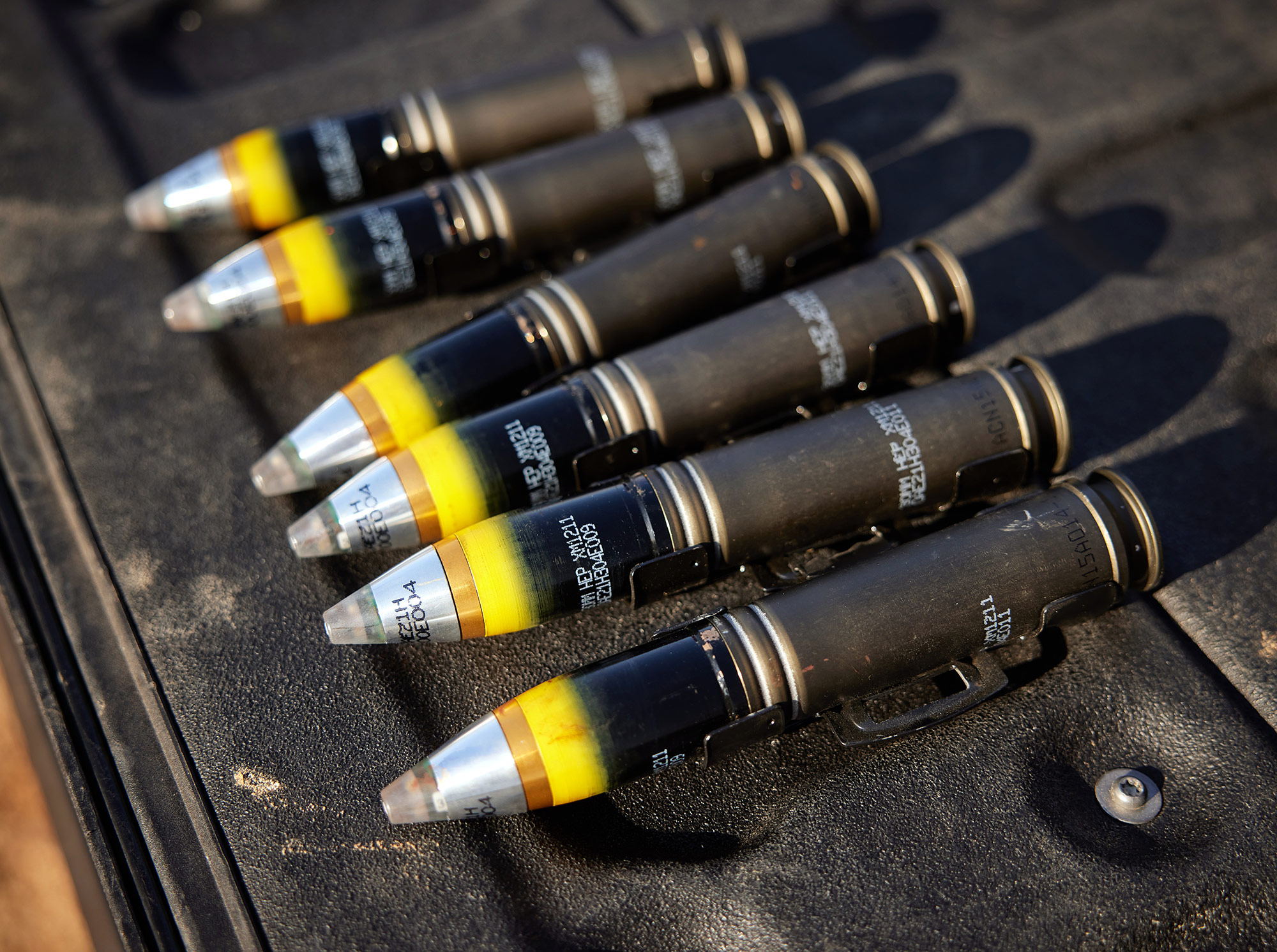
Credit: Northrop Grumman
However, it is at the Increment-3 stage that these 30 mm autocannons will also receive a new programmable ammunition – the XM1223 multi-mode, proximity airburst munition (MMPA), currently under development at Northrop Grumman, as of 2024. This new munition is intended to be effective against UAVs and terrestrial targets, and is likely to eventually replace the XM1211 and XM1198 rounds, due to its versatility against a wider number of both aerial and ground-based-personnel targets.
An M-SHORAD Increment-3 technology demonstration is planned by the US Army for later in 2024, with an operational demonstration slated for 2026, and a production decision by 2027. Considering Northrop Grumman’s programmable ammunition pedigree, the MMPA for M-SHORAD is unlikely to miss these milestones. The company has, for example, already delivered its Mk310 programmable airburst munition (PABM), which it also developed in cooperation with the US Army. The Mk310 is a proximity round, with a fuze that is set/programmed prior to firing with data that has calculated how many revolutions the round needs to make in flight, before detonation, to ensure a precise airburst hit, such as might be appropriate against UAVs, or entrenched/defiladed troops on the ground. The company also says it is in the process of developing a new guided munition that combines PABM technologies with continuous inflight course-correction capabilities, which will steer it precisely to its target, optimising first-round hit probabilities, as well as minimising chances of collateral damage.
Conclusion
The latest battlefield threats have forever changed the ways in which warfare is being conducted, with air defences on land and at sea being placed on notice to adapt or die. Luckily, adaptation seems to be the order of the day, with highly effective weapon platforms from leading industry players capable of delivering precise, devastating effectors on target, including the latest programmable airburst/proximity munitions. Some such munitions have already been proven operationally, while others are being put to the test on the battlefields of Ukraine, at time of writing, in the hope of making a difference in the defence of that nation – and probably the rest of Europe.
Tim Guest






